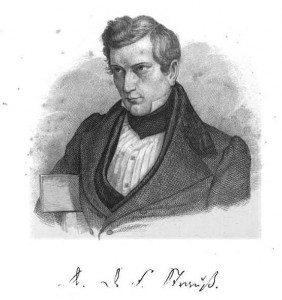 There is an inconsistency in a fundamental argument, or assumption, rather, among critical scholars of Christian origins that has long been bugging me.
There is an inconsistency in a fundamental argument, or assumption, rather, among critical scholars of Christian origins that has long been bugging me.
The principle was set down by David Friedrich Strauss in the nineteenth century,
when we find details in the life of Jesus evidently sketched after the pattern of these prophecies and prototypes, we cannot but suspect that they are rather mythical than historical. (Life of Jesus, Critically Examined, p. 89)
Now that maxim is frequently and sensibly deployed by critical scholars. It is the reason that Burton Mack (no doubt there are others, too) denies the historicity of Jesus charging into the Temple and expelling the “traders” there.
It is a fictional theme derived from the scriptural citations. (Mack, Myth of Innocence, p. 292)
Many scholars, however, need the “Temple disturbance” to be historical in order to explain why Jesus was eventually arrested so many jettison the principle to make the narrative work as history. (Paula Fredriksen points out the flaw in their argument.)
David Chumney (whose book, Jesus Eclipsed, I have just completed, and which has many excellent points along with a few unfortunate flaws) makes the point loud and clear:
- Matthew 8:16-17 (& 11:4-5) tell us that Jesus healed sicknesses in fulfilment of the prophecy in Isaiah 53:4 (Unfortunately once again the Strauss’s criterion is put aside by most scholars who require Jesus to have been a healer in order to explain his “historical following”.)
- The triumphal entry into Jerusalem is acknowledged by more scholars (e.g. E.P. Sanders, Robert Funk, John Dominic Crossan, David Catchpole) to be a fiction created out of scriptures such as Psalm 118:25-26 and Zechariah 9:9.
- The magi following the star (Matthew 2:1-12) is based on Numbers 24:17 and Isaiah 60:3, 5-6.
- Herod’s massacre of the infants (Matthew 2:16-18) is crafted from Exodus 1:15-22 and Jeremiah 31:15.
- The angel’s announcement of John the Baptist’s birth (to be) (Luke 1:8-20) is woven from Genesis 18:9-15.
- Mary’s prayer, the “Magnificat” (Luke 1:46-55) comes from 1 Samuel 2:1-10.
Robert Price draws attention to many more: the infant Jesus’ escape into Egypt; Jesus baptism; the 40 days in the wilderness and testing by Satan; the call of the disciples; the healing of Peter’s mother-in-law and her response; Jesus healing of the paralytic; healing the withered hand; the appointing of the twelve disciples; the instructions given to them on how to go out and preach; Jesus calming the storm; the exorcism of the Gerasene demoniac; the raising of Jairus’s daughter; Jesus’ family rejecting him; the execution of John the Baptist; the miraculous feedings of thousands; the walking on the sea; Jesus calling the people to listen to him; Jesus healing the daughter of the woman in the region of Tyre and Sidon; the transfiguration; the rivalry among the disciples for the most prestigious position; the story of the exorcist who did not follow Jesus; . . . . .
And the list could probably be just as long if we itemized each of the “prophesied” details in the Passion narrative. (See Price, “Jesus at the Vanishing Point” in The Historical Jesus: Five Views.)
John Shelby Spong concedes that pretty much everything in the gospels is fiction based a creative reworking of Jewish Scriptures. All except for virtually only one detail: the execution, the martyrdom, of Jesus.
That Jesus was “crucified under Pontius Pilate,” as the Creed affirms, is historically the most stable datum we have concerning Jesus . . . (Joel B. Green, “The Death of Jesus” in Handbook for the Study of the Historical Jesus, p. 2383)
. . . not that there is the slightest doubt about the fact of Jesus’ crucifixion under Pontius Pilate . . . (John Dominic Crossan, The Historical Jesus: The Life of a Mediterranean Jewish Peasant, p. 375)
There is no doubt both that he was crucified and that after his death he was believed to have been restored to life. (John Shelby Spong, Liberating the Gospels: Reading the Bible with Jewish Eyes. p. 236)
Yet it is the crucifixion of Jesus that is the MOST chock-full of Old Testament Scriptural allusions and citations. Continue reading “A Case for the “Easter” Appearances of Jesus BEFORE the Crucifixion”
Like this:
Like Loading...

